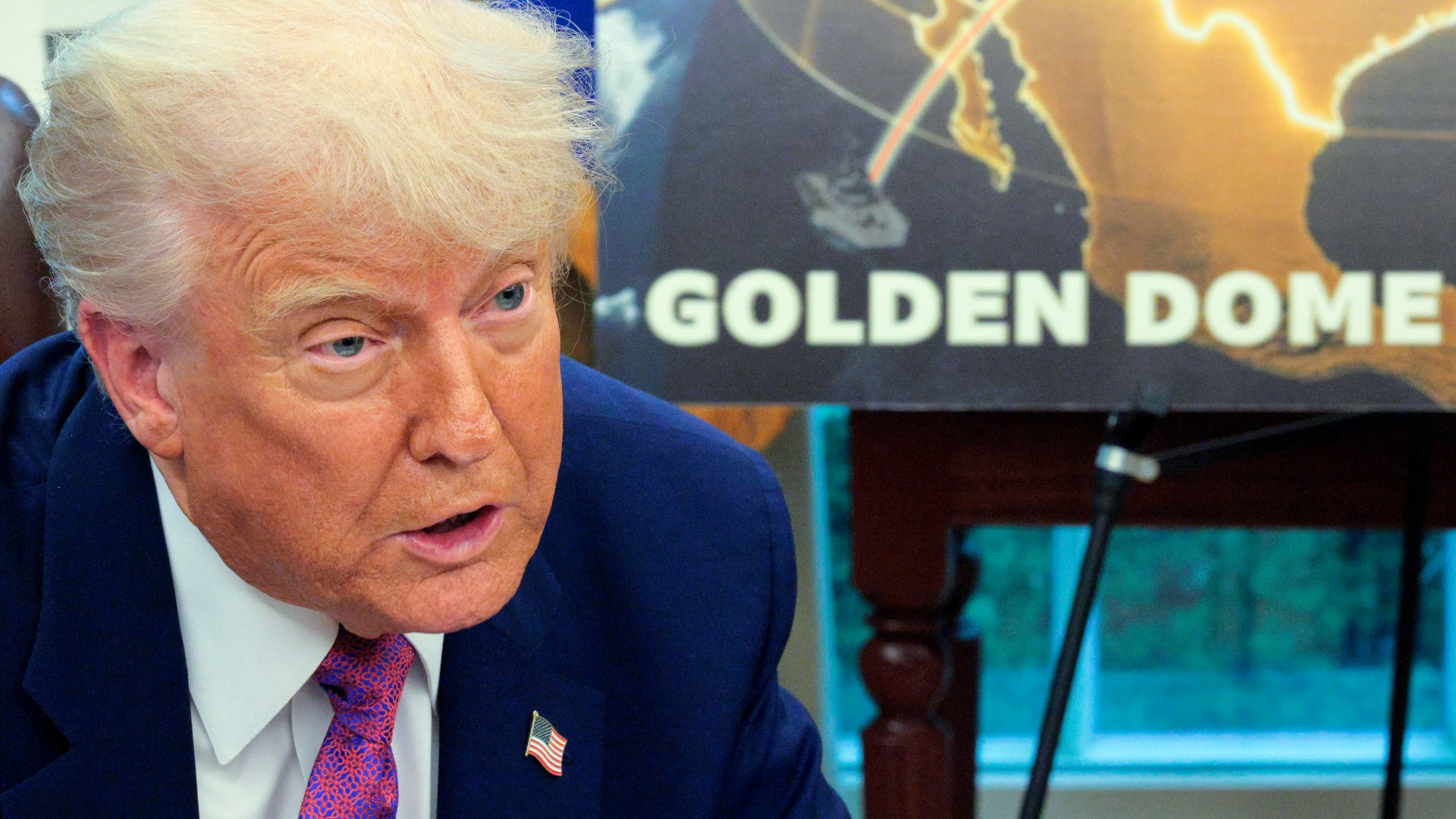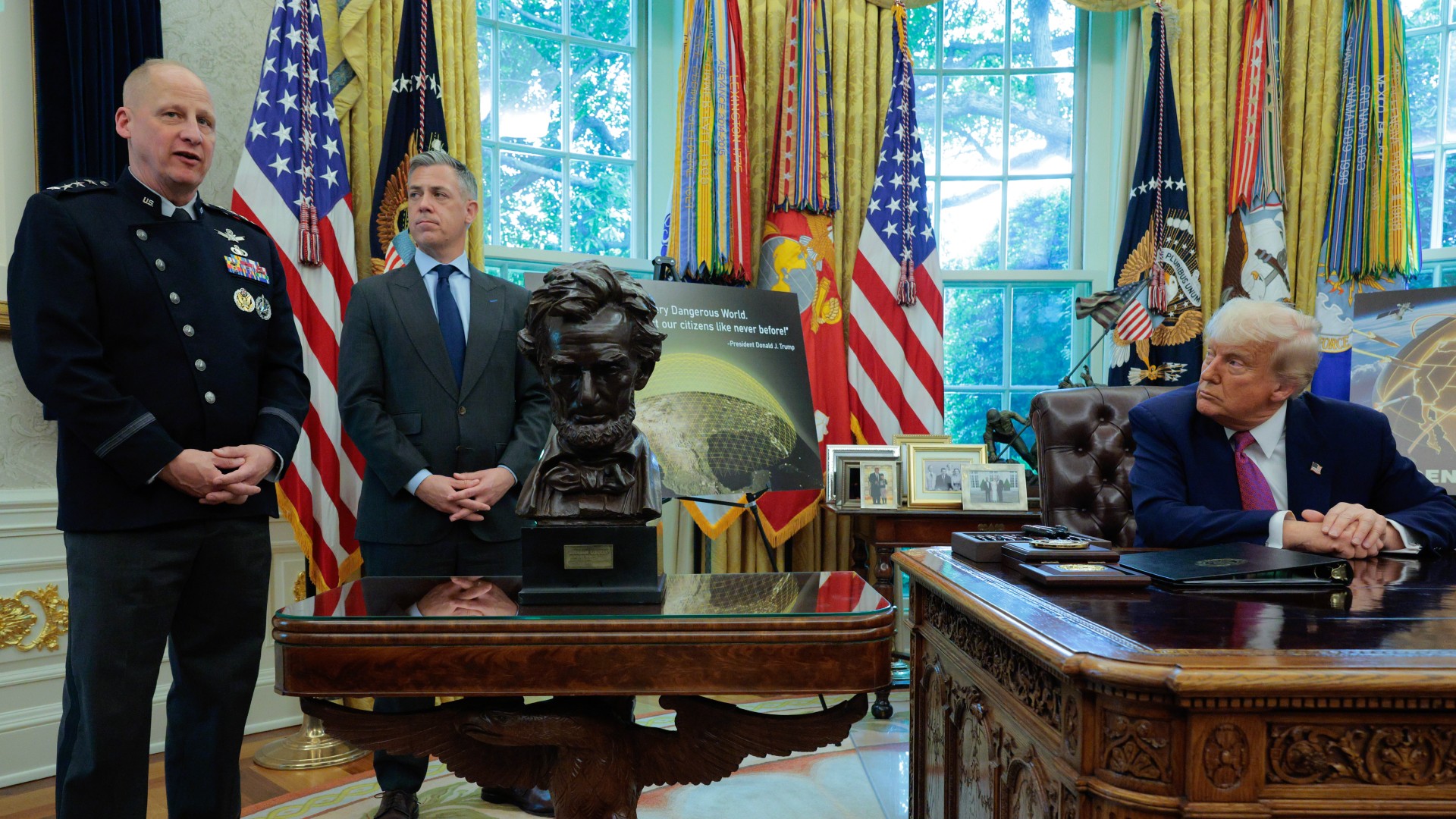U.S. President Donald Trump unveiled a plan for his ambitious "Golden Dome" missile defense shield this week, stating it will cost $175 billion and take about three years to develop — but some experts say the price tag could be many times higher.
The Golden Dome project aims to see the United States design and deploy a next-generation missile defense shield over the entire continental U.S. that will be able to detect, track and intercept hypersonic missiles and other advanced aerial threats. What makes Golden Dome unique is that it will feature space-based interceptors: spacecraft in Earth orbit capable of shooting down missile threats mid-flight.
On Tuesday (May 20), Trump and U.S. Secretary of Defense Pete Hegseth held a press conference in the White House during which they announced that U.S. Space Force General Michael Guetlein, Vice Chief of Space Operations, would lead the program. "It is time that we change that equation and start doubling down on the protection of the homeland," Guetlein said during the press conference.
Hegseth issued a statement on May 20 that states the Department of Defense is requesting an initial $25 billion of funding as part of Trump's "One, Big, Beautiful Bill" legislation that includes tax cuts and changes to spending.
"We look forward to continuing that work with Congress to secure funding for critical capabilities necessary in the FY26 budget request," Hegseth's statement added. "Golden Dome ensures that the American homeland is not left exposed while adversaries develop more advanced and lethal long-range weapons."
The Congressional Budget Office (CBO) published a report on May 5 that estimates the cost to deploy a constellation of space-based interceptors similar to what Trump has outlined in his vision for Golden Dome. According to the CBO, the lowest estimates for developing and deploying such a system are around $161 billion, which sits below Trump's projected costs. The CBO's higher estimates suggest the cost could reach $542 billion, or over half a trillion dollars.
In reality, the final price tag could be even higher.
During a security summit hosted by Politico this month, U.S. Space Force's Chief of Space Operations General B. Chance Saltzman explained his cost estimates. "I'm 34 years in this business; I've never seen an early estimate that was too high," Saltzman said, according to Air and Space Forces Magazine. "My gut tells me there's going to be some additional funding that's necessary."

While Golden Dome is described as a purely defensive system meant to protect the contiguous United States, other nations are already questioning the intention behind the program.
China's Foreign Ministry spokesperson Mao Ning told reporters today (May 21) that the Golden Dome program will "expand the U.S. arsenal of means for combat operations in outer space" and has "a strong offensive nature" that "violates the principle of peaceful use in the Outer Space Treaty."
While Russia initially criticized the initiative, Kremlin spokesperson Dmitry Peskov told reporters Tuesday (May 20) that Golden Dome is "a sovereign matter for the United States" and that the U.S. should be able to build missile defenses if it perceives a threat, according to the Moscow Times.
Golden Dome takes its inspiration, at least in name, from Israel's Iron Dome, a missile shield system that has been used since 2011 by the Israel Defense Forces to intercept rockets and artillery weapons. It consists of radar systems that detect and track threats, missile launchers, and a control center that coordinates between the two.
Golden Dome also has its roots in an earlier missile defense program proposed by President Ronald Reagan, known as the Strategic Defense Initiative. Reagan introduced the idea in a March 1983 televised address in which he implored the scientific community to help the United States develop space-based defense weaponry that could render the threat from nuclear weapons "impotent and obsolete."
The SDI program was given the nickname "Star Wars" by the media due to how outlandish it sounded at the time. But that was before Earth's orbit became militarized, launch costs plunged exponentially thanks to reusable rocket technology, and countries began deploying space-based weapons the likes of which were only found in science fiction when Reagan gave his address.
Fast forward four decades and Trump says the Golden Dome project could finally see Reagan's vision become a reality.
"We will truly be completing the job that President Regan started forty years ago, forever ending the missile threat to the American homeland," Trump said.
.png)
 German (DE)
German (DE)  English (US)
English (US)  Spanish (ES)
Spanish (ES)  French (FR)
French (FR)  Hindi (IN)
Hindi (IN)  Italian (IT)
Italian (IT)  Russian (RU)
Russian (RU) 









Comments